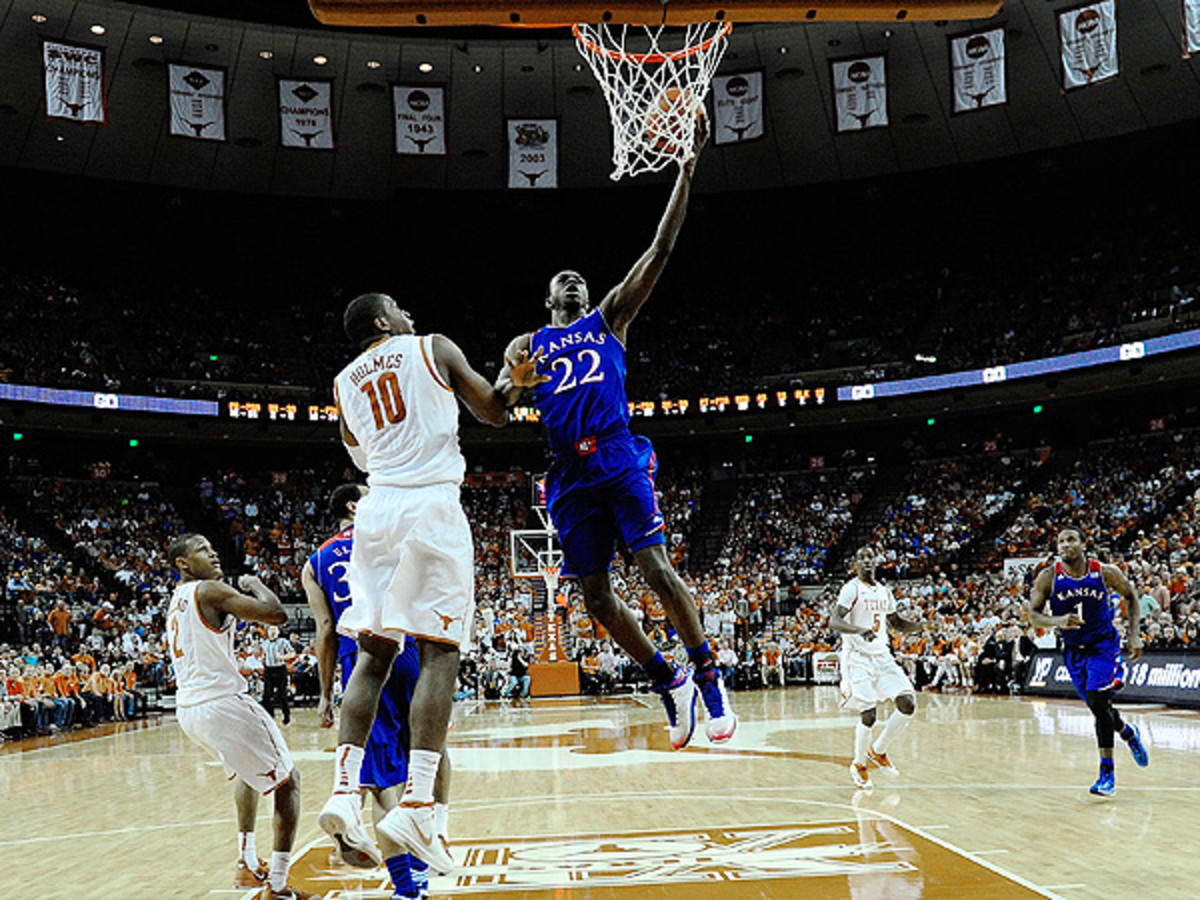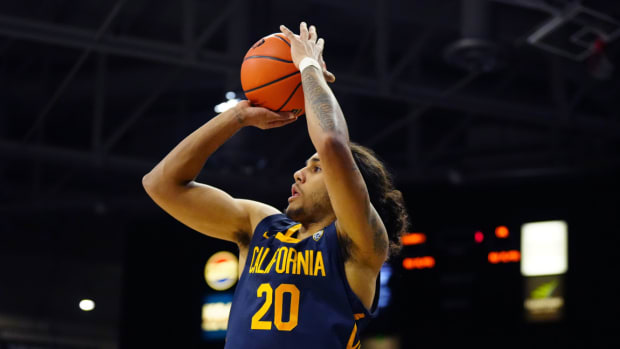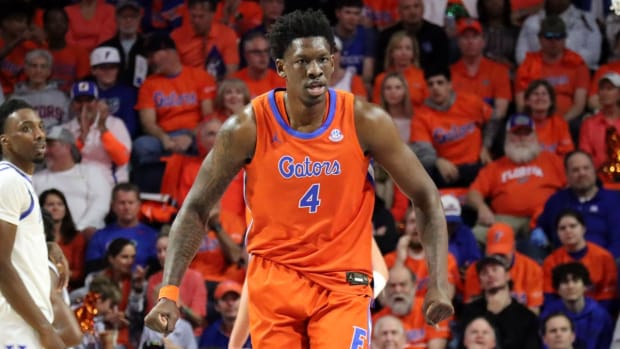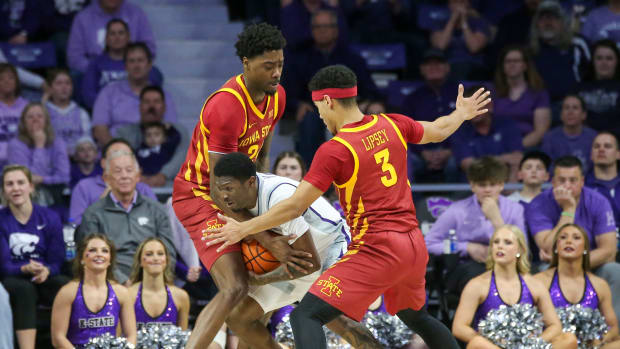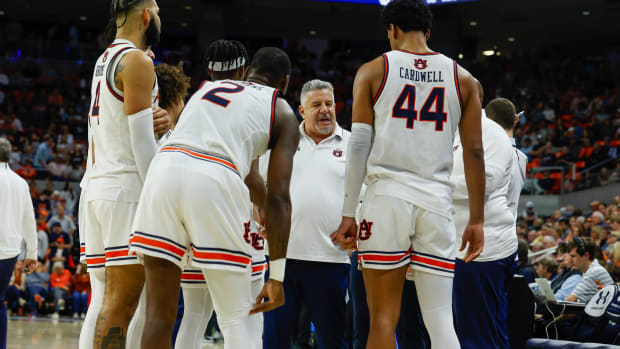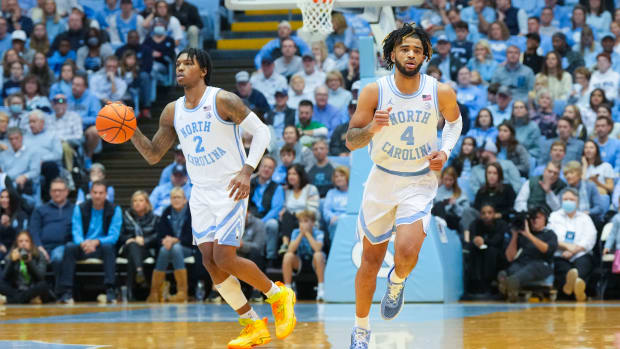Kansas freshman Andrew Wiggins can thrive if he stays aggressive
Andrew Wiggins seems to be at his best when playing aggressively, and the Jayhawks will need him at his best with Joel Embiid out. (Stacy Revere/Getty)
The ball flipped into his palms Monday night, Andrew Wiggins put his head down and set course for the rim. There appeared to be no consideration of another option. He may be the most scrutinized freshman in the nation, but there was no over-analyzing this. Kansas needed a game-tying basket, and Wiggins would try to provide it.
His first attempt to do so rimmed out. So Wiggins landed, hit reverse and in a bolt of athleticism used spring-loaded legs to get a hand on the miss and tip it back in. The Jayhawks had their tie game and a chance to win in overtime, which they ultimately let slip in an 85-82 loss before a relieved Kansas State crowd. But Kansas had a chance because Andrew Wiggins decided to give his team one, and it’s clear by now there’s no harm in the Jayhawks demanding more of that.
Though there are exceptions, Wiggins appears at his most efficient when he revs up the aggressiveness, even by a small amount. Given the revelation that fellow freshman Joel Embiid has succumbed to a bit of wear and tear and may be the Big 12’s most valued spectator for a stretch, an assertive Wiggins might keep the Jayhawks humming in the stretch run to a league title.
Wiggins has been consistently involved on offense, but he hasn't been consistently productive. His willingness to command shots hasn’t wavered much since the start of Big 12 play, with a shot percentage that ranged between 20 and 30 percent in nine of 11 league games so far.
Meanwhile, his effective field goal percentage, a measure that takes into account success (or failure) from three-point range, has been up and down. That figure has soared as high as 75 percent against Iowa State on Jan. 29 before plunging to 20.8 percent in the next game, at Texas on Feb. 1. But a correlation between Wiggins’ willingness to be even slightly more selfish, and the offensive efficacy that follows, has become clear.
On Jan. 25 against TCU, Wiggins posted a shot percentage of 30.0 and an effective field goal percentage of 69.2. Next came that Jan. 29 Iowa State game and a shot percentage of 30.3 to go with that blistering shooting performance, both bests in Big 12 play thus far.
Conversely, there was the league opener in which Wiggins’ shot percentage was 23.4 and his effective shooting rate just 22.2. The cellar floor was the Jan. 18 Oklahoma State game in which he had a shot percentage of 16.5 and an effective field goal rate of 30. There are of course exceptions – on Jan. 20, Wiggins had a shot rate of just 18.3 but 50 percent effectiveness from the floor – and this could be simply explained as Wiggins appraising how he feels and shooting more when he feels good.
But then there was the Jan. 13 game at Iowa State, when the Cyclones were running at full gale force. Before it, Wiggins’ father challenged him to attack the glass. Gauging Wiggins’ body language and approach courtside, the result seemed to be a loose and assertive player from the start, no feeling-out period needed or wanted. And the result of that: 17 points and 19 rebounds and a propulsive Kansas win.
Even his last two games should underscore for Wiggins what makes him most lethal: He’s 10-of-19 on two-point shots and 0-for-7 from long range while attempting double-digit free throws in each.
